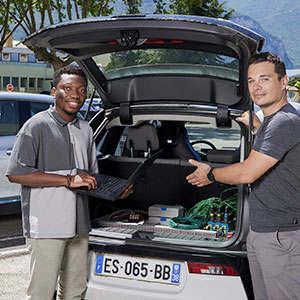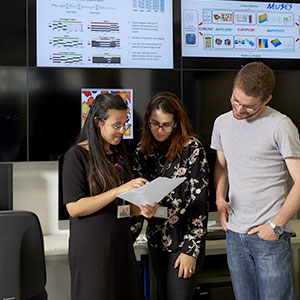Published on 27 May 2024
Body text 1

Making mobility more sustainable
| Modeling and Integration for Mobility Platform
Hydrogen and batteries are two complementary solutions for tomorrow's carbon-free land, air, and maritime transportation. Batteries are better for light vehicles over short and medium distances, while hydrogen is the solution of choice for heavy-vehicle and long-distance transportation.
In terms of where electric and hybrid-electric vehicle development currently stands, both of these energy storage technologies will be needed. The Modeling and Integration for Mobility Platform takes a system-level approach to solutions for mobility, from individual technologies to complete drivetrain systems. The platform can size systems and optimize energy management depending on vehicle usage. The platform's activities are organized around two units that work closely together to drive advances
toward carbon-free mobility!
|
Body text 2
KEY FIGURES
€4 million in investment
1,500 sq.
Grenoble &
Chambéry

| The electric mobility unit
integrates virtual and physical testing into hybrid battery and fuel cell systems for land, air, and maritime vehicles in conditions representative of the target use cases. Tests can be completed in the lab or in the real world, and are a valuable source of feedback on the performance, cycling, and ageing of systems developed by the CEA. The unit's main activities are: - Size and design hybrid systems and energy management laws; validate and optimize electric systems (batteries, PEMFCs) using simulation and rapid prototyping on a hardware-in-the-loop bench
- Instrument vehicles and analyze road test and usage data on actual batteries
|
The MUSES unit
develops multiphysics and multiscale simulation models and tools for Li-ion batteries, fuel cells, and proton exchange membrane electrolyzers. The unit's mission is to improve the performance, durability, and safety of these technologies to shorten time to market. Its activities include:
- Developing modeling and simulation tools at different scales, from material to system, factoring in the links between the –relevant resource.
- Designing and running specific experiments with the Battery and Fuel Cell Platforms to provide data for and validation test the Platform's simulation tools.
- Building and expanding a database of component properties and test results so that artificial intelligence algorithms can be implemented.
|

|
| The Modeling and Integration for Mobility Platform provides CEA-Liten's R&D partners with data they can use to make their products more reliable and, more generally, improve them before they are released. Partners can also leverage the platform's know-how to develop new products.
|
Top page